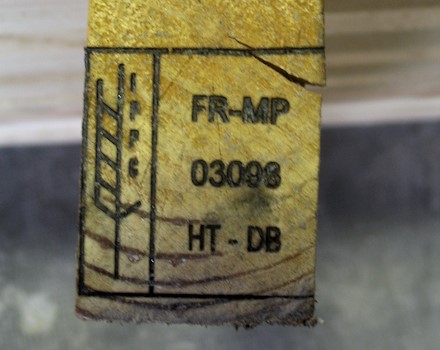
The ISPM 15 standard is an international regulation aimed at preventing the spread of pests and diseases through wood packaging used in international trade. It was established by the International Plant Protection Convention (IPPC) and is applied in many countries worldwide.
This standard applies to untreated wood packaging materials over 6 mm thick, such as pallets, crates, dunnage, and containers.
The purpose of ISPM 15 is to limit the spread of pests (such as insects and fungi) that could threaten local ecosystems and agriculture worldwide, and to establish standardized procedures for wood treatment to ensure it is pest-free.
Treatment Requirements
To comply with ISPM 15, wood packaging materials must be treated to eliminate any potential harmful organisms. Two main types of treatments are accepted:
- Heat Treatment (HT): Wood is heated to a minimum temperature of 56°C for at least 30 minutes.
- Methyl Bromide Fumigation (MB): Though less commonly used due to environmental impact, this method exposes the wood to methyl bromide to kill pests.
Compliance marking
Wood packaging that complies with ISPM 15 must bear a specific, easily identifiable mark that includes:
- The IPPC symbol
- A country identification code
- A code identifying the manufacturer or treatment provider
- The type of treatment applied (HT for heat treatment, MB for fumigation)